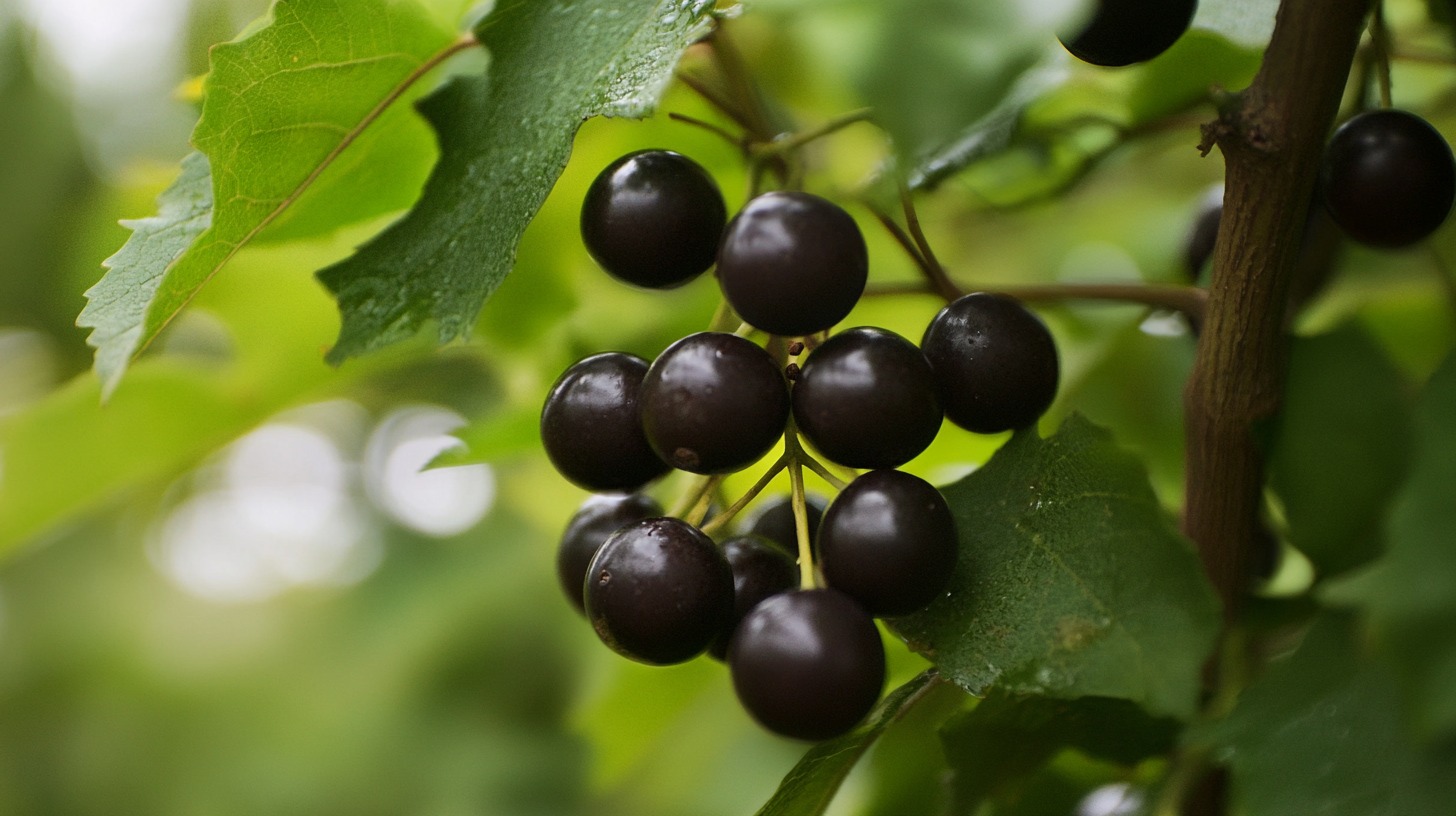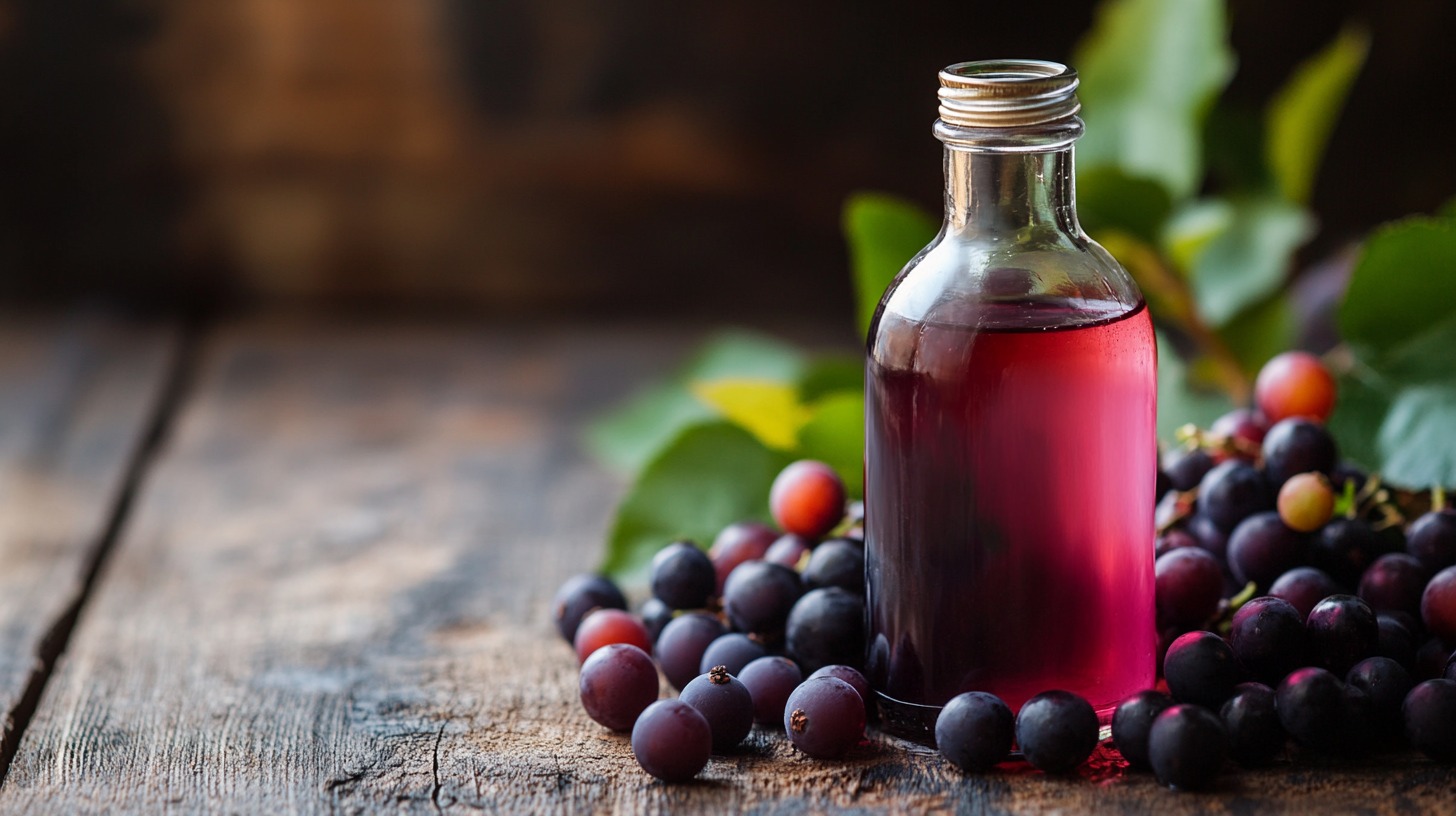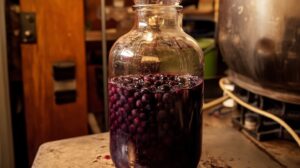Muscadine wine is a Southern classic, known for its sweet, fruity flavor and deep, rich color.
The simple and easy recipe is perfect for beginners and produces a delicious homemade wine that’s great for sipping on its own or pairing it with cheeses and desserts.

Muscadine Wine
Ingredients
Equipment
Method
- Step 1: Preparing the GrapesWash and de-stem the muscadine grapes.Place the grapes in a large sanitized stockpot or bucket and crush them to release the juice. You can use your hands, a potato masher, or a wine press.
- Step 2: Adding IngredientsPour the filtered water over the crushed grapes.Add the sugar and stir until completely dissolved.If using, add a crushed Campden tablet to sterilize the must (grape mixture). Let it sit for 24 hours before proceeding to fermentation.
- Step 3: Starting FermentationAfter 24 hours, sprinkle the wine yeast over the surface of the must. Add yeast nutrient if desired. Stir gently.Cover the fermentation vessel with a clean cloth or loosely with its lid to allow oxygen to help kickstart fermentation.
- Step 4: Primary FermentationPlace the fermentation vessel in a cool, dark place (70–75°F). Stir the must daily to keep the grape skins submerged.After 5-7 days, strain the mixture through cheesecloth into a sanitized glass carboy, discarding solids.
- Step 5: Secondary FermentationAttach the fermentation lock to the carboy to allow gases to escape while preventing contamination.
- Step 6: BottlingSiphon the wine into sanitized bottles, leaving sediment behind.Seal the bottles with corks or caps and store them in a cool, dark place.
Video
Notes
- Carbohydrates: 10g
- Protein: 0g
- Fat: 0g
- Sweetness Adjustment: Taste the wine before bottling. If it’s too dry, dissolve additional sugar in a small amount of water and mix it in.
- Storage Tips: Use dark bottles to protect the wine from light, which can affect flavor.
- Testing: A hydrometer can measure the sugar content and help you track alcohol levels.
Are There any Alternatives for Ingredients?
If muscadine grapes are unavailable or you’d like to experiment with other flavors, several alternatives can work beautifully in this recipe. Concord grapes, for example, are a widely available variety with a similar deep, fruity flavor.
They can produce a rich, robust wine that rivals muscadine in sweetness and aroma. Concord grapes are perfect for those who enjoy the traditional essence of grape juice and are seeking a familiar flavor profile in their homemade wine.

For a unique twist, you can substitute muscadines with other fruits such as:
- Blackberries
- Blueberries
- Raspberries
These berries provide a vibrant color and a tart-sweet balance that creates a deliciously different wine. Be sure to adjust the sugar content to balance the natural tartness of the berries.
Tropical fruits like mango or pineapple can also be used for an exotic variation, resulting in a lighter, more aromatic wine that pairs wonderfully with summer dishes. When using non-grape fruits, consider adding a small portion of raisins to enhance body and depth.
The Bottom Line
Making muscadine wine at home is a rewarding process that combines tradition, creativity, and a bit of science. With its sweet, fruity flavor and rich aroma, this Southern classic is perfect for sipping on its own or serving at gatherings.
Not only does this process allow you to create a wine that suits your taste perfectly, but it also connects you to the craftsmanship of winemaking.







